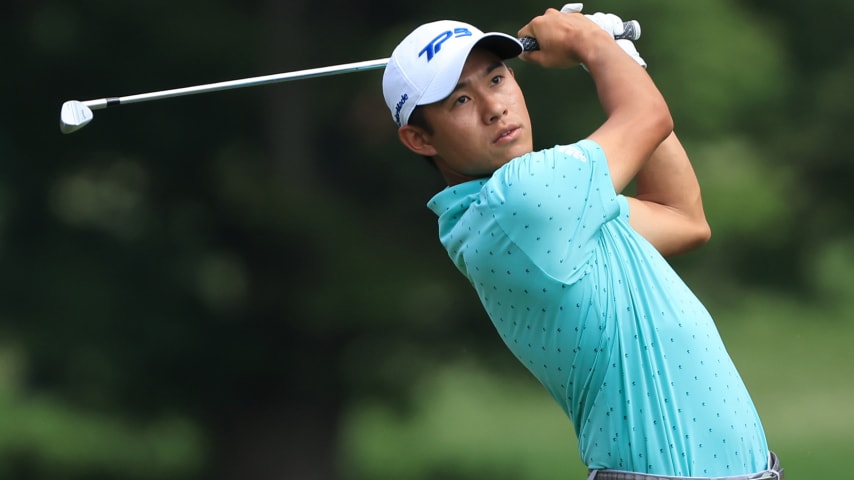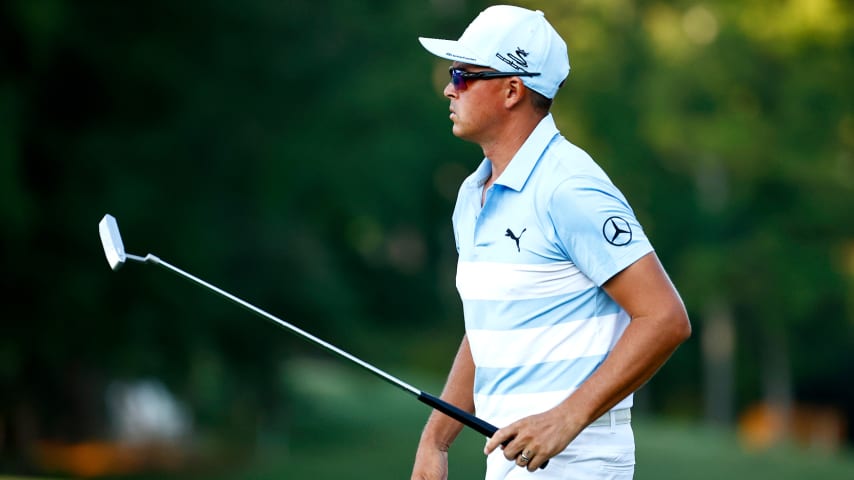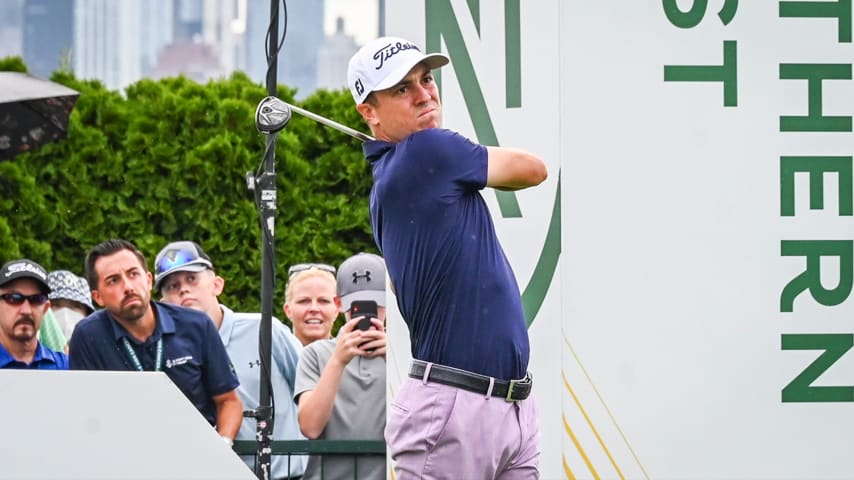The secrets to the swing that has Collin Morikawa atop the FedExCup standings
7 Min Read

Written by Sean Martin
JERSEY CITY, N.J. – At the start of this season, there was talk of a revolution.
Bryson DeChambeau’s U.S. Open victory put an increased focus on length and strength. It seemed his transformation would inspire a new generation of bulked-up brutes who’d bludgeon the game’s historic grounds, as he had done at Winged Foot.
But now, nearly a year later, a player with a much different skill set has risen to the top of the FedExCup. Collin Morikawa leads the standings after winning The Open – his second major triumph before turning 25 – and a World Golf Championship (Workday Championship at The Concession).
He has put his career on a historic trajectory thanks to his excellence with his irons. Accuracy, which has been celebrated since the days of hickory shafts, is his calling card. Morikawa, who stands 5-foot-9 and weighs 160 pounds, has proven that even in today’s modern age, the ability to overpower a course is not a prerequisite for success.
“I know what my shots do. I just kind of stick to that,” Morikawa says. “I don't want to change anything just because guys are hitting it higher and guys are hitting it farther. I've stuck to what I've been doing.”
After turning pro in 2019, Morikawa quickly established himself as one of the game’s top iron players. He has only burnished that reputation since. He finished second in Strokes Gained: Approach-the-Green last season and now is on pace for one of the best single-season performances since that metric debuted in 2004. He is gaining 1.4 strokes per round with his approach play, which would be the sixth-best season in that stat’s history and second-best by a player not named Tiger Woods.
| BEST SEASONS IN SG: APPROACH | ||
| Year | Name | SG: Approach |
| 2006 | Tiger Woods | +2.07 |
| 2007 | Tiger Woods | +1.65 |
| 2013 | Tiger Woods | +1.53 |
| 2016 | Adam Scott | +1.49 |
| 2009 | Tiger Woods | +1.40 |
| 2021 | Collin Morikawa | +1.40 |
| Note: Statistic debuted in 2004. | ||
I asked Morikawa and his longtime coach, Rick Sessinghaus, what allows the FedExCup leader to stand out in this area. I divided the conversation into three parts. How much of his excellence with his irons is due to innate talent? What role do his swing mechanics play? How does his mental approach play a role?
This is what they had to say.
IN CONTROL
Sessinghaus says Morikawa has long exhibited a knack for ensuring the clubface is square at impact. Hand-eye coordination plays a role. A lot of junior golfers, because of a lack of strength in their core and glutes, fall back at impact and have to use their hands to square the face.
Morikawa hit draws until he was around 16 years old but even then his ball did not curve very much, Sessinghaus says.
“He always had very, very good clubface control,” Sessinghaus says. “Even when he was 12, 13, 14, he wasn’t hitting massive hooks like we see with a lot of juniors, and he could make corrections pretty quickly.”
PUT A BOWON IT
The hands are a player’s connection to the club. Morikawa’s reveal some of the reasons for his strong ball-striking. His weak grip and bowed left wrist at the top of the backswing both lead to less clubface rotation through impact. Sessinghaus says he did not specifically teach these things to Morikawa. Instead, Morikawa’s understanding of cause and effect in the swing, and his desire to hit a fade, led him adopt those characteristics.
“I would always tell him, ‘I’m letting you know that grip looks slightly weak in the left hand, but because these balls are going so straight we’re not going to change it,’” Sessinghaus says. “If we started seeing ball-flight changes, like a weak right shot, I would have to make adjustments but I always let ball flight be the guide.”
A bowed left wrist, which Dustin Johnson, Jon Rahm and Viktor Hovland also have, is becoming more commonplace on TOUR. “The common trend now is to use the bowed left wrist to match a more of a ‘body rotation’ release,” Sessinghaus says. With the clubface slightly closed at the top of the backswing, players’ hands are less active through impact.
“When he was a teenager, I would show him his impact position and I would say, ‘Please never, never change it,’” Sessinghaus says. “The lead wrist was so far in front of the club that it looked awesome. … If you reverse engineer it, he always felt comfortable with the weak left grip and he reverted to a slightly bowed left wrist as his way to keep it square.”
Sessinghaus likes to have his players hit punch shots – low shots with an abbreviated swing – to learn to square the clubface through impact with their body rotation, instead of their hands.
Says Morikawa, “I have a little bowed wrist, not as bowed as some people's. Club is still fairly square. And I just hold that, kind of turn, rotate, clear out the hips, and I'm able to hit that little baby cut, what I've been known for the past few years.”
Morikawa has won two majors but he and Sessinghaus still point to wins from junior golf to remind him of key feelings in his swing. That’s the benefit of sticking with one coach for so many years.
Sessinghaus says Morikawa’s win at the 2013 Western Junior marked the transition to “adult golf.” It was around that time that they started shifting from a draw to the left-to-right shot that has become Morikawa’s trademark.
“If he reverts to his spine tilt getting too far back (to the right at impact), I say, ‘Hey, remember the Western Junior,’ and he knows what I’m talking about,’” Sessinghaus says. “He had a feeling like he was staying on his left side the whole time. He wasn’t, but that was his feeling. We will go back to past success and times he didn’t hit the ball well. It’s almost like an inventory of his feels.”
GET CREATIVE
Though Morikawa hits a left-to-right trajectory on the majority of his iron shots, he still alters the height and amount of curvature. That allows him to tap into his creativity.
“Even though he’s known to hit a fade a majority of the time, it doesn’t mean he’s hitting the exact same fade,” Sessinghaus says. “He has no problem gripping down on an 8-iron, hitting it three-quarters or changing his trajectory, cutting it a little more than 10 feet. … He and (his caddie, J.J. Jakovac) talk about trapping shots and changing trajectory. It’s 90-95% of his shots that move left-to-right, but that could be 1 inch or it could be 20 feet.”
“He and J.J. have worked extremely well in the last year talking through shots, how specific they are going to be. You saw that at The Open Championship. They knew exactly where the ball was going to start, they knew exactly the trajectory and exactly where it was going to finish. The clarity of that picture is very important for performance. There was no doubt, no lack of commitment. If you have clarity, you have commitment, and your golf swing is going to be more natural than steering it or forcing it.”
That creativity dates back to Morikawa’s start in the game. The course he grew up on, Chevy Chase Country Club, is a nine-hole course that has 10 greens and 36 tees to increase the variety. It didn’t have a driving range, just a net for players to hit warm-up shots into. Morikawa made the most of it – he’d create uneven lies by hitting balls while standing to the side of the mat – but it also drove Morikawa to the course, where he could hit multiple shots and experiment.
“It actually sticks out to me now because, look, we're never going to get a flat lie. We're always going to have to adjust. You're always going to have to do something different,” he says. “I think that's why me practicing on the golf course, throwing a few balls out, and it's been that creative side of hitting different shots.”
Finally, Morikawa’s poise also allows him to perform his best under pressure. Sessinghaus calls it “state management.” He believes Morikawa’s is the best in the game.
“His ability to manage his state, to be calm and be focused, he’s taking the same state from the range to the course,” Sessinghaus says. “Even at The Open, he stayed calm. He had great distance control with his irons. Others, with adrenaline, their timing changes. You go, ‘What happened?’ It was a mental thing. Their state changed.”






